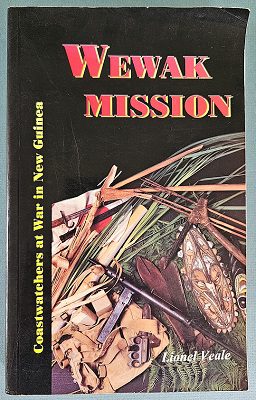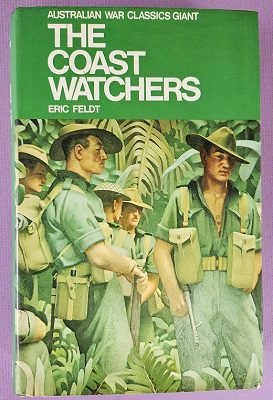Description
Title: Commando, from Tidal River to Tarakan – the story of the No 4 Australian Independent Company AIF later known as the 2/4th Australian Commando Squadron, AIF, 1941 – 45
Author: Lambert, George Ernest
Condition: Very Good
Edition: 1st Edition
Publication Date: 1994
ISBN: 064617827
Cover: Hard Cover with Dust Jacket – 509 pages
Comments: The detaled history of the No. 4 Independent Commando Company.
The 2/4th Independent Company was formed in December and when its training was complete, in March 1942, the 2/4th was posted to Katherine, in the Northern Territory. Following the bombing of Darwin in February, the 2/4th was given an operational role. The company was deployed in small groups to areas between the McArthur and the Ord Rivers. If the Japanese had landed, the 2/4th would not have been able to stop them – the company was instead supposed to harass and disorganised the Japanese.
The Japanese did not come and in August the 2/4th moved to Adelaide River. In September the company travelled to Darwin where it boarded the destroyer HMAS Voyager, bound for East Timor (then Portuguese Timor) to reinforce the 2/2nd Independent Company.
After Japan entered the war, the 2/2nd had been sent to Timor and following the Japanese occupation of the island in February, had been conducting a guerrilla war using ‘hit and run’ tactics. The 2/4th continued this guerrilla war and from September carried out many successful ambushes, blew bridges and roads, and manned two observation posts in the mountains outside Dili where they reported the movements of Japanese ships and aircraft. However, during the last few months of 1942, the Japanese had intensified their efforts to end such resistance and they made the situation untenable for the Australians. In mid-December the 2/2nd was evacuated from Timor to Darwin, as was the 2/4th in January 1943.
After leave, in April, the 2/4th reformed at the army’s training centre at Canungra, Queensland, where it was reinforced and reequipped. The company then moved to Wongabel, on the Atherton Tableland, where it became part of the 2/7th Cavalry (Commando) Regiment. As part of this reorganisation, in October, the 2/4th Independent Company was redesignated the 2/4th Cavalry (Commando) Squadron. However, when the name change came, the 2/4th was already overseas. This name was later simplified to just commando squadron.
As part of the build up for the 9th Division’s amphibious landing at Lae, the 2/4th had been sent to Milne Bay in early August. While there, the 2/4th came under the command of the division’s 26th Brigade. The squadron served with the 9th Division for the rest of the war. The 2/4th was to provide reconnaissance and flank protection for the brigade after landing. Lae was to be Australia’s first amphibious landing since Gallipoli.
On 4 September, troops from the 20th and 26th Brigades came ashore at Lae. The 2/4th came ashore in the second wave, but they suffered heavy casualties with 34 men killed or missing when the second wave was attacked by Japanese dive and torpedo bombers, hitting their ship.
After the capture of Lae, on 30 October the 2/4th was sent by barge to reinforce the 20th Brigade at Finschhafen in the clearing of the Huon Peninsula. Here it conducted numerous long range patrols, often being sent ahead of the main advance. At the end of February 1944 the 2/4th returned to Australia for leave.
In March, the men regrouped at Ravenshoe, Queensland, and the squadron was transferred to the 2/9th Cavalry (Commando) Regiment with the newly formed 2/11th and 2/12th Commando Squadrons. As with the rest of 9th Division, the 2/4th spent the next year training in northern Queensland.
In April 1945 the squadron sailed from Townsville for Morotai and, eventually, Borneo. Devised towards the end of the war, the OBOE operations were designed to reoccupy areas of the Netherlands East Indies with the 9th and 7th Divisions making amphibious landings on Borneo. From Morotai, on 30 April, the 2/4th landed unopposed on Sadau Island and then, a few days later, on 3 May, on the small island of Tarakan supporting the 26th Brigade. In the coming days and weeks the 2/4th saw extensive service on Tarakan, particularly in the northern area, but the campaign was virtually over by July and on 15 August Japan surrendered.
With the war over, the ranks of the 2/4th gradually thinned as men were either discharged or transferred and the unit returned to Australia at the end of 1945. The 2/4th Commando Squadron was disbanded on 8 January 1946.
Tear to Dust Jacket at back and repaired with cello tape, spine of the Dust Jacket faded from sun exposure, previous owners name on the title page.
Includes Nominal Roll





